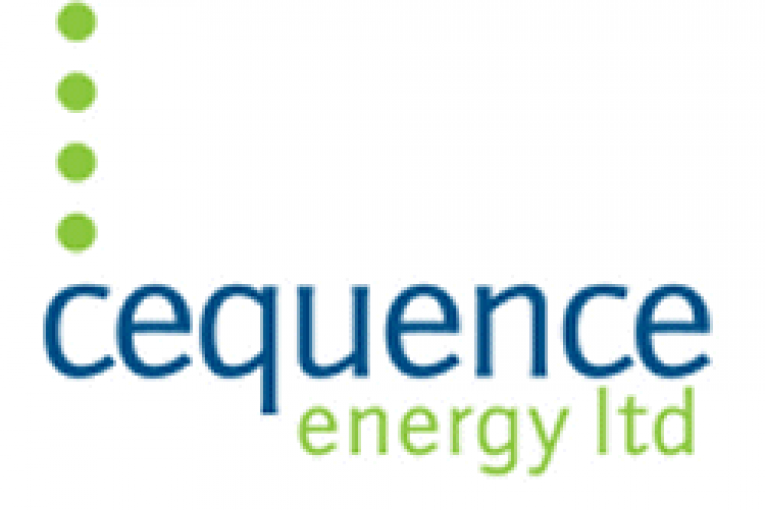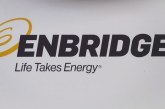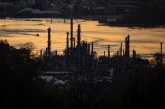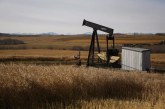
[ad_1]
Cequence Energy Announces 2017 Second Quarter Financial and Operating Results
Operational and financial highlights of the Company from the second quarter include:
- Increased funds flow from operations to $6.8 million or $0.03 per share, an increase of 336% from the same period in 2016, driven by higher prices and lower costs;
- Achieved average quarterly production of 8,502 boe/d, up 8% from the same period in 2016 despite significant weather access restrictions which shut-in or restricted approximately 850 boe/d in the quarter;
- Operating costs were $7.53/boe in the quarter, down 7% from the same period in 2016;
- Renewed the Company’s $20 million senior credit facility until May 2018;
- Achieved production of 75,000 barrels of oil from the 9-11 Dunvegan well in approximately 155 operating days;
- The 2 new West Simonette Montney wells averaged IP 90 of approximately 695 boe/d per well (34% condensate); and
- Began pipeline work to tie-in the Dunvegan oil wells to minimize road ban truck out restrictions, with full operation commencing in mid-July.
|
Three months ended June 30, |
Six months ended June 30, |
|||||
|
(000’s except per share and per unit amounts) |
||||||
|
2017 |
2016 |
% Change |
2017 |
2016 |
% Change |
|
|
FINANCIAL |
||||||
|
Total revenue(1) |
17,810 |
11,343 |
57 |
37,164 |
27,115 |
37 |
|
Comprehensive loss |
(94,899) |
(12,212) |
677 |
(89,648) |
(18,100) |
395 |
|
Per share – basic and diluted |
(0.39) |
(0.06) |
550 |
(0.37) |
(0.09) |
311 |
|
Funds flow from operations(2)(5) |
6,781 |
1,554 |
336 |
14,127 |
1,240 |
1,039 |
|
Per share, basic and diluted |
0.03 |
0.01 |
200 |
0.06 |
0.01 |
500 |
|
Capital expenditures, before acquisitions (dispositions) |
2,536 |
958 |
165 |
17,582 |
8,320 |
111 |
|
Capital expenditures, including acquisitions (dispositions) |
2,536 |
1,096 |
131 |
17,582 |
8,247 |
113 |
|
Net debt(3) |
(67,862) |
(73,507) |
(8) |
(67,862) |
(73,507) |
(8) |
|
Weighted average shares outstanding – basic and |
245,528 |
211,028 |
16 |
245,528 |
211,028 |
16 |
|
OPERATING |
||||||
|
Production volumes |
||||||
|
Natural gas (Mcf/d) |
42,719 |
40,127 |
6 |
43,959 |
46,190 |
(5) |
|
Crude oil (bbls/d) |
224 |
178 |
26 |
352 |
198 |
78 |
|
Natural gas liquids (bbls/d) |
239 |
244 |
(2) |
255 |
240 |
6 |
|
Condensate (bbls/d) |
919 |
748 |
23 |
867 |
904 |
(4) |
|
Total (boe/d) |
8,502 |
7,857 |
8 |
8,800 |
9,040 |
(3) |
|
Sales prices |
||||||
|
Natural gas, including realized hedges ($/Mcf) |
2.83 |
1.73 |
64 |
2.81 |
1.94 |
45 |
|
Crude oil and condensate, including realized hedges |
60.11 |
54.01 |
11 |
61.37 |
49.76 |
23 |
|
Natural gas liquids ($/bbl) |
26.11 |
21.50 |
21 |
28.12 |
19.13 |
47 |
|
Total ($/boe) |
23.02 |
15.86 |
45 |
23.33 |
16.48 |
42 |
|
Netback ($/boe) |
||||||
|
Price, including realized hedges |
23.02 |
15.86 |
45 |
23.33 |
16.48 |
42 |
|
Royalties |
(1.20) |
0.17 |
806 |
(1.43) |
(0.27) |
430 |
|
Transportation |
(2.13) |
(1.08) |
97 |
(1.86) |
(1.13) |
65 |
|
Operating costs |
(7.53) |
(8.13) |
(7) |
(7.92) |
(9.13) |
(13) |
|
Operating netback |
12.16 |
6.82 |
78 |
12.12 |
5.95 |
104 |
|
General and administrative(5) |
(1.53) |
(2.51) |
(39) |
(1.40) |
(3.37) |
(58) |
|
Interest(4) |
(1.98) |
(2.24) |
(12) |
(1.97) |
(1.93) |
2 |
|
Cash netback |
8.65 |
2.07 |
318 |
8.75 |
0.65 |
1,246 |
|
(1) |
Total revenue is presented gross of royalties and includes realized gains (loss) on commodity contracts. |
|
(2) |
Funds flow from operations is calculated as cash flow from operating activities before adjustments for decommissioning liabilities expenditures and net changes in non-cash working capital. |
|
(3) |
Net debt is calculated as working capital (deficiency) less the principal value of senior notes. |
|
(4) |
Represents finance costs less amortization on transaction costs and accretion expense on senior notes and provisions. |
|
(5) |
For the three and six months ended June 30, 2016, general and administrative expenses and funds flow from operations includes $201 and $1,931 in restructuring charges (2017 – $nil). |
Financial
Funds flow from operations was $6.7 million for the second quarter and $14.1 million year to date. Funds flow in was significantly better than the previous year and reflects both improved crude oil and natural gas prices and the Company’s lower cost structure. Realized sales prices (including hedging) increased 45 percent from the second quarter 2016 and 42 percent year to date. Comprehensive loss for the quarter ended June 30, 2017 was $94.9 million compared to a loss of $12.2 million in 2016. The Company recorded an impairment charge in the quarter from the prolonged decline in its third party reserve evaluators future oil and natural gas price forecast over the life of the Company’s reserves.
Capital expenditures, net of dispositions, were $2.5 million in the second quarter and relate primarily to the completion of the Company’s winter drilling program of 4.0 gross (3.0 net) wells at Simonette. There were no new wells spud in the quarter.
The Company has $67.9 million in net debt at June 30, 2017 which is comprised of $60 million in senior notes and a working capital deficiency of $7.9 million. The Company’s senior credit facility of $20 million is currently undrawn and was reviewed in the quarter, with the maturity date extended one year to May 2018. The Company’s next scheduled bank review is scheduled for November 2017.
Management believes that Cequence’s exposure to commodity market pricing volatility is well hedged for 2017, including 65 percent of natural gas volumes in the third quarter at an average price of $2.80/GJ.
Operating costs for the quarter were $7.53/boe down 7% from the same period of 2016 while the operating netback improved by $5.34/boe to $12.16/boe.
Operational Update
Average production in the second quarter of 2017 of 8,502 boe/d was up 8 percent from the second quarter of 2016. Oil and condensate production increased by 23% or 217 bbl/d over the same period in 2016. The two Dunvegan oil wells (50% WI) brought on stream in January of 2017 continue their strong performance, with the 9-11-62-26W5 well having produced 75,000 bbls gross in 155 operating days.
Wet spring weather closed roads in the Simonette area which resulted in shut-down or restricted production from the Cequence operated 5-7-62-25 oil battery for 76 days (84%) of the second quarter. To mitigate these issues, in mid-July, Cequence commissioned a more reliable long term tie-in solution for the 5-7 oil facility. Production from the 5-7 facility averaged 162 bbl/d of oil (278 boe/d) net to Cequence in the second quarter while net production the last 14 days of July increased to 394 bbls/d oil and 966 boe/d net to Cequence.
Outlook
The Company provided full year guidance on May 11, 2017 which has been revised to include the results of the first half of the year performance and the current outlook for commodity prices. The revised guidance reflects the impact of the weather related volume restrictions experienced in the second quarter as well as the changes to commodity pricing and associated capital program since that time. In light of the current commodity pricing environment, capital preservation and prudent debt management are the primary focus points of the Company.
Despite the improved financial performance so far in 2017, the Company remains cautious on the outlook for commodity prices over the next twelve months as forward commodity prices remain low. The annual capital expenditure program has been reduced to $24 million from $29 million to closely match lower expected commodity prices and funds flow. Two net Dunvegan wells are planned to be spud in December 2017 with production expected to be achieved in Q1 2018. Any additional drilling activity for the remainder of the winter is not expected to be finalized until the fourth quarter of 2017.
Spending will be targeted within cash flow, with 2017 production volumes expected to average between 8,500 to 8,700 boe/d. The Company may adjust its capital expenditure program should commodity prices increase or decrease significantly. In addition, natural gas prices have been volatile in July and August resulting is some periods of very low prices. Should these conditions persist the Company may choose to shut in some natural gas wells until prices improve to preserve well economics.
The Company expects recent improvement to operating and general and administrative costs to continue throughout 2017. Based on forecasted commodity prices of US$ 49.25/bbl WTI and CDN$ 2.50/GJ natural gas, Cequence expects funds flow from operations of $23 million for 2017.
(000’s, except per share and per unit references) |
Revised Guidance Year ended December 31, 2017 |
Original Guidance Year ended December 31, 2017 |
Average production, BOE/d(1) |
8,500-8,700 |
9,000 – 9,200 |
Funds flow from operations ($)(2) |
23,000 |
28,000 – 29,000 |
Funds flow from operations per share(2) |
0.10 |
0.12 |
Capital expenditures, ($) |
24,000 |
29,000 |
Operating and transportation costs ($/boe) |
10.25 |
10.00 |
G&A costs ($/boe) |
1.60 |
1.65 |
Royalties (% revenue) |
8 |
8 |
Crude – WTI (US$/bbl) |
49.25 |
50.00 |
Natural gas – AECO (CDN$/GJ) |
2.50 |
2.75 |
Period end, net debt ($)(3) |
65,000 |
64,000 – 65,000 |
Weighted average basic shares outstanding |
245,500 |
245,500 |
(1) |
Average production estimates on a per boe basis are comprised of 85% natural gas and 15% oil and natural gas liquids. |
(2) |
Funds flow from operations is calculated as cash flow from operating activities before adjustments for decommissioning liabilities expenditures and net changes in non-cash working capital. |
(3) |
Net debt is calculated as working capital (deficiency) less the aggregate principal amount of the senior notes. |
About Cequence
Cequence is a publicly traded Canadian energy company involved in the acquisition, exploitation, exploration, development and production of natural gas and crude oil in western Canada. Further information about Cequence may be found in its continuous disclosure documents filed with Canadian securities regulators at www.sedar.com.
[ad_2]
You can read more of the news on source



